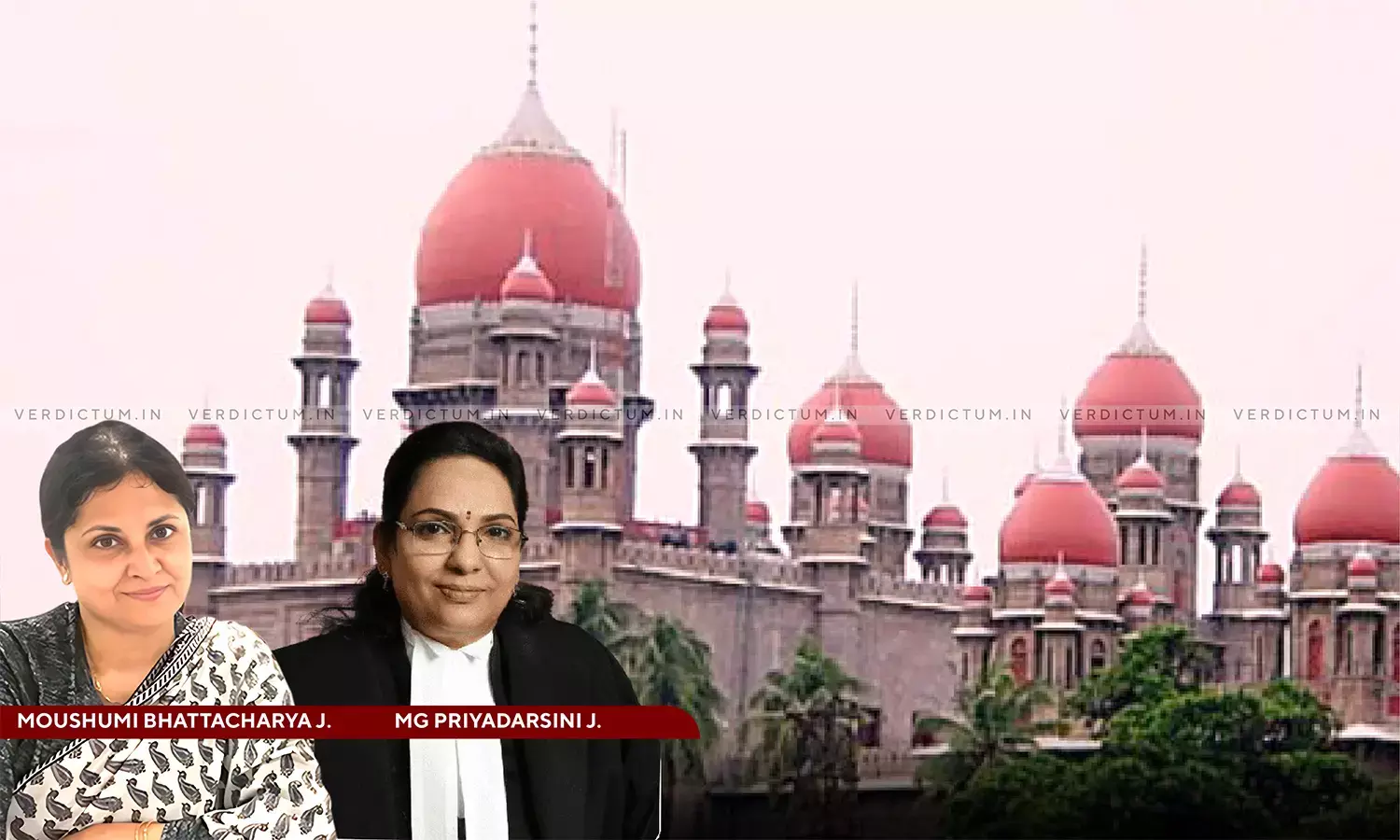Plaint Must Disclose Clear Right To Sue And Not Illusion Or Mirage Of Cause Of Action: Telangana HC
The Telangana High Court, while upholding the rejection of a Plaint, has observed that the Plaint must disclose a clear Right to Sue and not an illusion or mirage of a cause of action.
The Division Bench of Justice Moushumi Bhattacharya and Justice MG Priyadarsini has held, “The Plaint must disclose a clear Right to Sue – not an Illusion or Mirage of a Cause of Action… Order VII Rule 11 of the CPC lists 6 cases in which a plaint should be rejected. The word “shall” in Order VII Rule 11 makes rejection mandatory where any of the 6 conditions exist including where the plaint does not disclose a cause of action, as in the present case. Order VII Rule 11 presumes dismissal of a Suit on rejection of the plaint without the rigour of trial. The only requirement is that the Court must conclude that the plaintiff has filed a meritless Suit by way of a plaint which fails to disclose a cause of action. The appellant’s argument that the cause of action pleaded in the plaint should have been tested in the trial is therefore contrary to the CPC as well as the case law.”
Senior Advocate Vedula Srinivas for the Petitioner while Senior Advocates Vedula Venkatramana, Dishit Bhattacharjee and Advocate Manjhari S Ganu appeared for the Respondents.
An appeal was filed challenging an order passed by the Additional Chief Judge, City Civil Court in an application made by Respondents/Defendants under Order VII Rule 11 of The Code of Civil Procedure, 1908 (‘CPC’) for rejection of the plaint filed in the Appellant’s Suit.
The appellant/plaintiff filed a Suit before the Trial Court for partition of the suit schedule property by allotting 1/3rd share to the appellant and for declaration of the Gift Settlement Deed executed by respondent No.1/defendant No.1 in favour of respondent No.2/defendant No.2 as null and void. By the impugned
order, the defendants- respondents’ application under Order VII Rule 11 of CPC was allowed and the appellant’s plaint was rejected.
The Court briefly noted the admitted facts in the Plaint and the conflicting causes and claims in the Plaint. As regards the contradictions demolishing the cause of action, the Court observed, “The contradictory statements made in the plaint cannot be seen as inconsequential but one that collapses the substratum of the appellant’s case, as the plaintiff. In other words, it is not merely a case of approbation and reprobation but of the plaintiff setting up mutually- destructive causes of action. To reiterate, once the appellant/plaintiff acknowledges that the suit schedule property is the self-acquired property of the respondent No.1 and the respondent No.1 had absolute ownership of the property, the plaintiff cannot subsequently plead that the very same property is transformed to a Joint Family Property which is amenable to partition.”
The Court also held that the cause of action in the Plaint was self-destructive and that the expression “Cause of Action” has been described to mean every fact which would be necessary for the plaintiff to prove if traversed, to support the plaintiff’s right to judgment. In other words, cause of action consists of a bundle of material facts which are necessary for the plaintiff to prove to entitle the plaintiff to the relief claimed. For ascertaining the cause of action, the averments made in the plaint must be read in its entirety - and not in isolation - and must be held to be correct. The Court added that the plaintiff must prove its case on the averments made in the plaint and further the relief claimed must have a real nexus with the cause of action pleaded.
The Court placed its reliance on the following judgments: a cause of action must include some act done by the defendant which leads the plaintiff to file a Suit and includes all the material facts on which the cause of action is found: Swamy Atmananda Vs. Sri Ramakrishan Tapovanam (2004). The plaint must disclose a clear right to sue i.e., an undiluted entitlement to relief as reflected from the statements in the plaint. Order VII Rule 11 of the CPC may be pressed into service where a plaint is manifestly vexatious and meritless in not disclosing a clear right to sue: T. Arivandandam Vs. T.V. Satyapa(1997). The Supreme Court has frowned upon clever drafting for creating an illusory cause of action: ITC Ltd. Vs. Debts Recovery Appellate Tribunal (1998). The necessity of the plaint disclosing a valid Cause of Action: Dahiben Vs. Arvindbhai Kalyanji Bhanushali (Gajra) (2020) and Ramisetty Venkatanna Vs. Nasyam Jamal Saheb (2023).
The Court also held that the Appellant-Plaintiff filed a vexatious Suit where the causes of action are mutually destructive and are extinguished by the time the plaint reaches the reliefs and this was an instance of a try-one’s-luck plaint where the plaintiff has blown hot and cold and reversed his stand; from accepting the suit schedule property being a self-acquired property to questioning the right of the respondent No.1 to transfer the said property in favour of respondent No.2 by way of the Gift Settlement Deed.
“The plaint, in any event, lacks clarity, including in the articulation of what the plaintiff intends to say. The statements are vague to the extent of referring to the defendants as a group as opposed to the defendant No.1 (as the aggrieved party) who executed the Will Deed, the Cancellation of the Will Deed and the Gift Settlement Deed.”, the Court added.
Accordingly, the Court upheld the decision of the trial court rejecting the Appellant’s Plaint and dismissed the appeal.
Cause Title: Bajranglal Agarwal v. Smt. Susheela Agarwal and Ors.
Appearances:
Petitioner: Senior Advocate Vedula Srinivas
Respondents: Senior Advocates Vedula Venkatramana, Dishit Bhattacharjee and Advocate Manjhari S Ganu












